Comic Books in the early Golden Age weren’t just about superheroes (although a quick glance at the newsstands would have suggested otherwise). There were other titles that featured great storytelling and even better art. Take for example one of my favorites, Fairy Tale Parade. This title was probably not unique in its design to use the comic book format to re-tell classic fairy tales; however, it featured the artwork of one of the greatest funny animal artists of all time, Walt Kelly who would eventually gain international fame for his creation of Pogo. In 1942, Kelly was a recent alumnus of the Walt Disney Studio, and upon the advice of Walt Disney, began his work in comics. Not only did Kelly draw early Disney comics for Dell, he displayed his genius as an artist in his work on Fairy Tale Parade, first published by Dell in June-July, 1942.
Not only were Kelly’s abilities showcased on the front covers and interior of this title, but his intricate work on the back covers (that wrapped partially around to the front) was amazing to behold. While I usually don’t spend much time studying the back covers of comics, Fairy Tale Parade is certainly an exception to this rule, and every time I look, I find something that I did not notice before (the back covers also served as a table of contents for each issue).
With issue #1, Dell’s inside front cover inscription set the stage for the entire series, and alerted the readers (and their parents) that the title was being offered “not as a shortcut to reading, but in the hope of instilling desire to read and re-read the fairy tales, legends and myths of bygone days.” Also unique to most comic books of the day, Dell touted “Walt Kelly, the artist who drew all of the wonderful pictures in this book.” It was rare, indeed, for an artist in the early Golden Age of Comic Books to receive credit for his or her work, much less the praise Oskar Lebeck (the Dell Editor) bestowed upon Kelly (note, also that Kelly signed his name to the bottom corner of the back cover).
As seen from the back cover, this issue contained Kelly’s renditions of some classic fairy tales, including Hansel and Gretel and Little Black Sambo. Similar to Carl Barks’ now censored renditions in “Voodoo Hoodoo”, it is very doubtful that Kelly’s work on Little Black Sambo would be accepted today. Regardless, Kelly’s work on these stories of old is enjoyable and fun to read.
Issue #2 (August-September 1942) is another great effort by Kelly, and his back cover is even more detailed and intricate than his effort on issue #1. Although not in full color, the myriad of images on this cover are a delight to behold. This issue features Jack the Giant Killer, Snow White and Rose Red, The Emperor’s New Clothes, Tom Thumb, Cinderella, Puss in Boots and Sinbad the Sailor. Just like in issue #1, these are all great stories and very fun to read.
Keeping to their bi-monthly schedule, Dell and Kelly were back with issue #3 (October-November 1942). For those who loved the back cover and wraparound of issue #2, this was a real treat as the intricate art from the previous issue was back in full color. I also love the front cover of this issue as it really captures Kelly’s superb abilities.
In issue #3, more great classic fairy tales were told, such as, Rip Van Winkle, The Elves and the Cobbler, Rumpelstiltsken, and others.
Dell’s Fairy Tale Parade continued through issue #9 (November, 1943-January, 1944) when it was made a part of Dell’s Four Color Comics series. The first Four Color issue was #50 (1944) followed by #69, #87, #104, #114 (the last issue by Walt Kelly) and #121 (1946).
If you get tired of reading about the superheroes from the Golden Age of Comic Books, see if you can find a “reading copy” of Fairy Tale Parade by Kelly. Not only is it a refreshing change from the sometimes stiff and bland superhero fare, it’s an opportunity to see a master at work in some of his earliest comics endeavors.

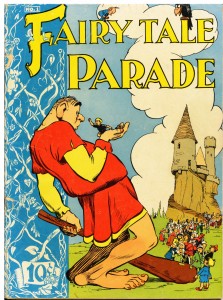
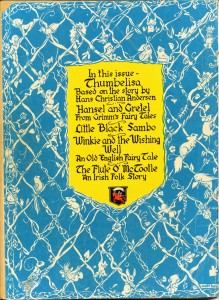
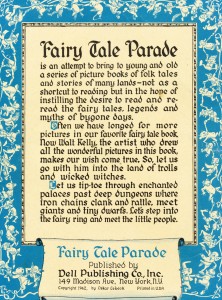

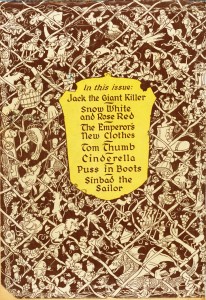
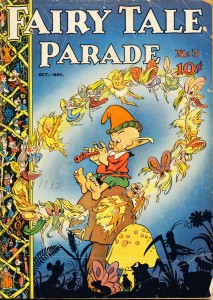
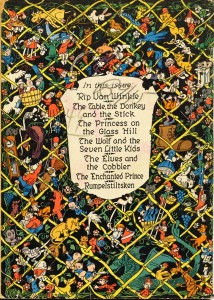

One Response to A Golden Age Fairy Tale